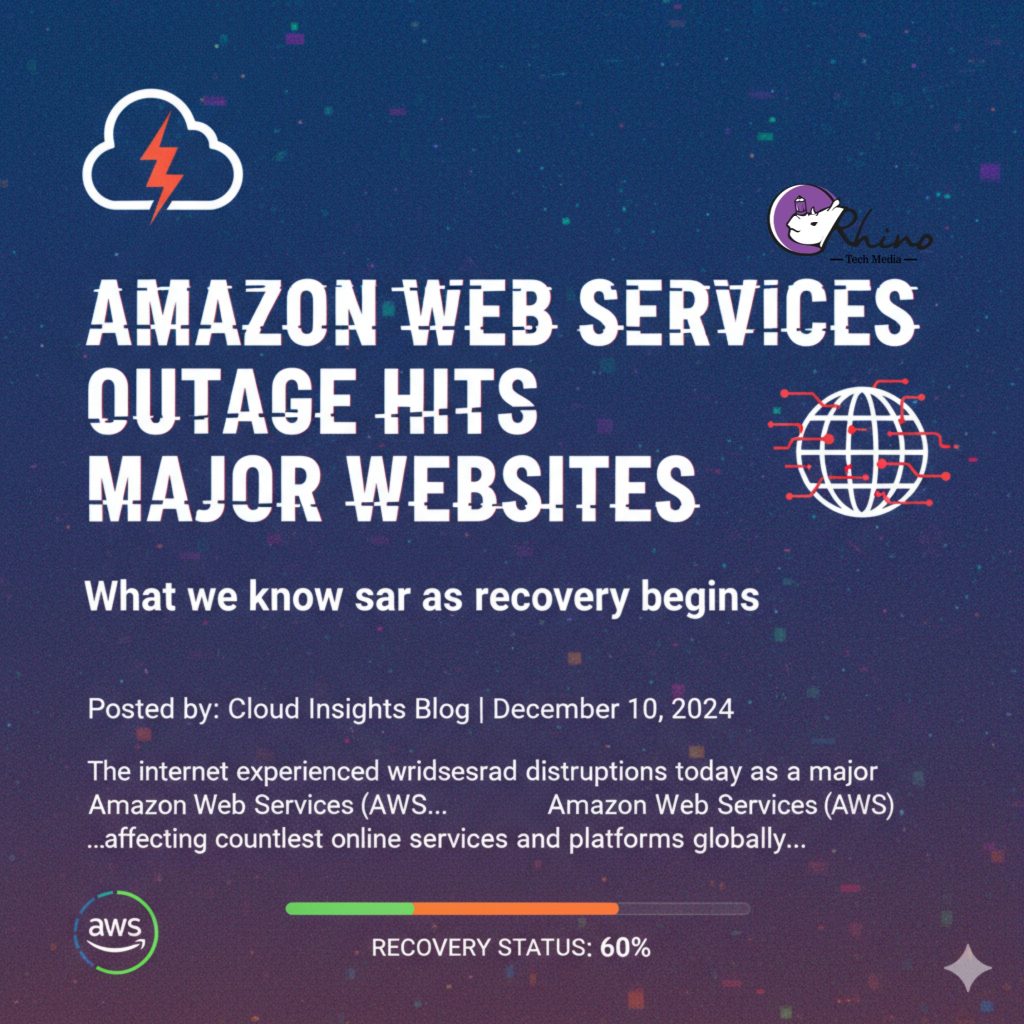Introduction
On Monday, 20 October 2025, AWS, one of the world’s largest cloud-infrastructure providers, suffered a major service disruption that rippled across the internet. The outage impacted scores of apps, websites, and services globally—ranging from social media and gaming to banking and smart-home devices. As the company works to stabilise and recover, the event is prompting renewed scrutiny of cloud-infrastructure dependencies and resilience strategies.
What Happened
The incident unfolded in the early hours of the morning (Eastern Time) and centred on AWS’s US-East-1 region in Northern Virginia, a critical hub of the company’s infrastructure.
According to status updates:
- AWS reported “increased error rates and latencies for multiple services” in US-East-1.
- The disruption is believed to stem from a key domain-name system (DNS) or database connectivity issue (associated with the service Amazon DynamoDB) used by many downstream services.
- The scale is significant: Downdetector and other outage-tracking services logged millions of user reports across dozens of companies.
Among the impacted services were major apps and platforms such as Snapchat, Fortnite, Signal, Roblox, and even AWS’s own internal services and Amazon-branded offerings.
In the UK, organisations such as HM Revenue & Customs (HMRC) and banks (e.g., Lloyds Bank and its subsidiaries) reported service interruptions.
Recovery Status
AWS reported in its status updates that a “fully mitigated” state had been reached for the primary root cause by around 6:30 a.m. ET.
Additional points:
- By mid-morning (UK time) AWS indicated global services and features relying on US-East-1 had recovered.
- Some services, however, still experienced residual elevated error rates, delays in launching new instances, backlog of request processing, and slower functionality of certain features (e.g., serverless functions, databases).
- AWS recommended some remedial steps for its customers—e.g., clearing cached data or retrying failed requests.
Overall, while the bulk of service disruption appears to have been resolved, full restoration and normalisation (including clearing queue/backlog) are still in progress.
Why It Matters
The outage is not just a nuisance: it underscores several deeper issues in how the modern internet is architected and how business-continuity planning is conducted.
1. Concentration risk
When a major cloud provider such as AWS encounters problems, the impact is felt broadly across many sectors. As one expert put it: “When a major cloud provider sneezes, the Internet catches a cold.” The centrality of a handful of providers (AWS, Microsoft Azure, Google Cloud) in the underlying digital infrastructure means failure has broad consequences.
2. Redundancy and architecture limitations
The incident has triggered renewed questions about cloud-redundancy strategies: Did downstream customers sufficiently spread workloads across regions, availability zones, or even across cloud providers? The fact that US-East-1 remains a critical chokepoint has been highlighted.
3. Domino effects and business impacts
Services like payment processors, trading apps, booking systems, and smart-home devices rely heavily on cloud infrastructure. Outages cascade into failed transactions, service errors, and user-trust problems. For example, service disruption in banking apps or doorbell/camera platforms creates real-world risks.
4. Cost and reputational damage
While precise figures are not yet publicly available, past cloud outages have resulted in millions to billions in losses. The cost here is potentially large: lost revenue, remediation costs, increased service-support load, and brand damage.
Lessons and Forward Outlook
As recovery continues, several lessons and implications emerge:
- Diversify infrastructure: Companies may revisit their reliance on a single region or a single cloud provider. Multi-region, multi-cloud strategies, though more complex and expensive, may gain renewed interest.
- Test for fail-overs: Knowing failure can happen, organisations should regularly test their fail-overs, fallback paths, and disaster-recovery plans—not only for hardware but for cloud services and dependencies (e.g., DNS, databases).
- Design for resiliency, not just cost-efficiency: The cheaper scenario often clusters workloads in fewer regions or providers; the resilient approach tolerates failure by design.
- Visibility and communication: With so many services relying on third-party infrastructure, transparency about dependencies, status updates, and remediation plans are vital for business continuity.
- Regulatory and governance implications: For sectors such as banking and government, outages raise questions about oversight, vendor management, and systemic risk in digital infrastructure.
Conclusion
The AWS outage of October 2025 delivers a timely reminder that our digital infrastructure—though highly capable and scalable—is not immune to failure. The disruption affected millions of users, numerous companies, and critical services worldwide. While AWS has announced mitigation of the main fault and many services are returning to normal, residual impacts remain and the broader implications linger.
For businesses, it is a wake-up call: cloud services are powerful enablers, but without robust architecture, redundancy, and contingency planning, they also represent a potential single point of failure. For the internet and digital-economy ecosystem, the incident raises deeper questions about the dependency on a few infrastructure providers and how much resilience is built into that system.
In short: recovery is underway, but the deeper work begins now. Organisations would do well to learn from this episode, rather than assume “it won’t happen to us.”

